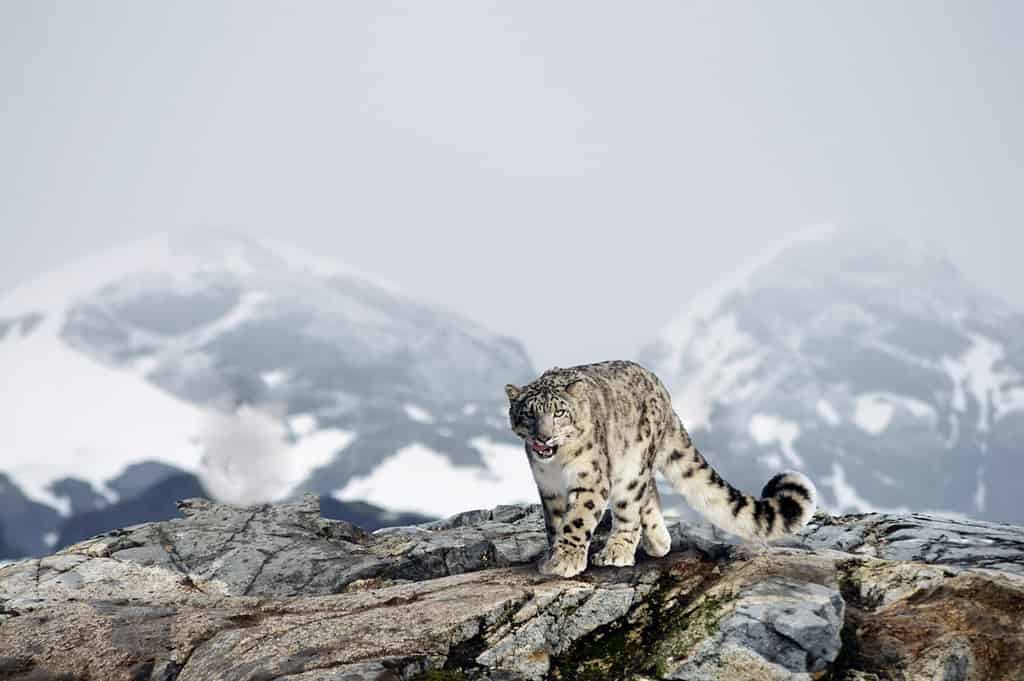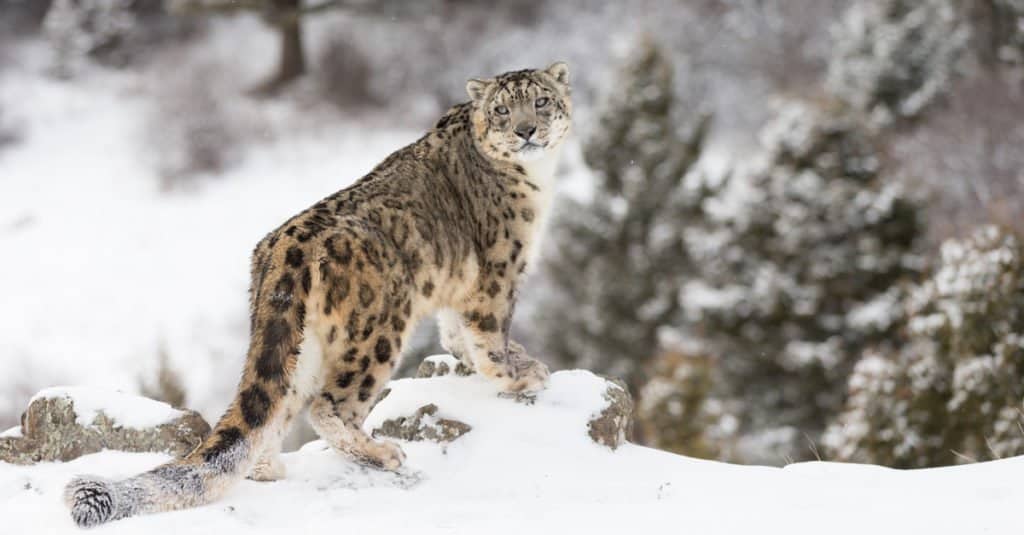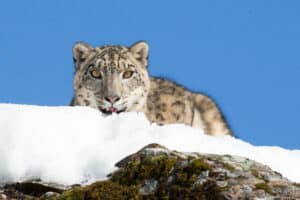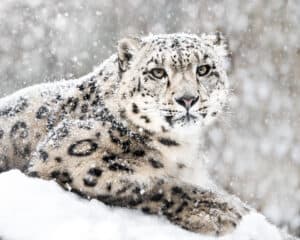The majestic snow leopard, native to the rugged mountains of Central Asia, finds itself in a precarious position. As the high-altitude habitats of these elusive cats increasingly succumb to the effects of climate change and infrastructural development, the snow leopard’s already sparse population is dwindling. Are snow leopards endangered? Experts say there are 4,000 to 6,500 snow leopards remaining in the wild. They are classified as vulnerable by the International Union for Conservation of Nature (IUCN). These enigmatic creatures are at the forefront of conservation efforts. Initiatives range from community-based conservation projects to international collaborations whose mission is to secure a future for the Ghost of the Mountains. Continue reading to discover more about these magnificent cats and the efforts that are contributing to the conservation of the species in the wild.

The majestic snow
leopard
, native to the rugged mountains of Central Asia, is
vulnerable.©Asmakhan992/Shutterstock.com
What is a Snow Leopard?
The snow leopard (Panthera uncia) is native to the mountain ranges of Central and South Asia. Its thick fur is pale and covered with dark rosettes and spots, which provides effective camouflage in the rocky terrain. Snow leopards are elusive, solitary animals, except during the breeding season or when a mother is raising cubs. They are carnivores and primarily feed on argali, blue sheep (bharal), ibex, marmots, and other small mammals.
Their size and physical characteristics prove they are fit for their mountainous habitats. A snow leopard’s body is generally between 2.5 to 4 feet (75 to 130 cm) long, excluding their tail. The tail of a snow leopard is relatively long. It is an adaptation to help with balance in the mountainous terrain. Tails usually measure 2.5 to 3 feet (80 to 100 cm) long. Snow leopards stand about 2 feet (60 cm) tall at the shoulder. Adult snow leopards usually weigh between 49 to 120 pounds (22 to 55 kg). Males are usually larger than females.

Snow leopards survive well in the cold, harsh environments of high altitudes.
©Dennis W Donohue/Shutterstock.com
Conservation Status
Snow leopards face various threats including poaching, habitat loss, and retaliatory killings by herders protecting their livestock. As a result, the species is classified as vulnerable by the IUCN. Vulnerable is one step away from being classified as endangered. The vulnerable classification indicates that the species faces a high risk of extinction in the wild if the current threats persist. However, conservation efforts are underway to protect and preserve these majestic cats and their habitats.
Conservation Efforts
There are several conservation breeding programs and initiatives focused on snow leopards. The goal of these programs is to increase the captive population for conservation, research, and educational purposes. Their ultimate goal is to contribute to the conservation and continuation of the species in the wild.
The Snow Leopard Species Survival Plan (SSP), managed by the Association of Zoos and Aquariums (AZA), is a cooperative breeding program for snow leopards in North American zoos. SSP works to maintain a genetically diverse and healthy population of snow leopards. The Global Snow Leopard and Ecosystem Protection Program (GSLEP) is an international initiative that involves collaboration between snow leopard range countries, non-governmental organizations, and local communities. While not a breeding program per se, GSLEP focuses on conserving snow leopards and their ecosystems. They address issues such as poaching, habitat protection, and human-wildlife conflict.
The Snow Leopard Trust is a non-profit organization that works on various conservation projects, including community-based conservation efforts in snow leopard habitat regions. They focus on research, community engagement, and conservation programs to protect snow leopards and their habitats. The Central Asian Breeding Program (CABP) involves collaboration between zoos in Central Asia and Europe to breed and manage snow leopards in captivity. It aims to enhance genetic diversity and knowledge about the species.
The captive breeding of snow leopards helps maintain a viable population in captivity. It also provides valuable insights into their biology and behavior, which contributes to effective conservation strategies in the wild. Thanks to these organizations and others like them, there’s an excellent probability that snow leopards will be around for a long time.
Five Furry Facts About Snow Leopards
- Snow leopards have only one predator: Humans.
- Farmers protecting their livestock in specific areas, on average, kill one snow leopard every day.
- Snow leopards don’t roar. They meow. Their cries are described as piercing.
- What’s in a name? Snow Leopards are more closely related to tigers than leopards.
- A snow leopard uses its extra-long tail for balance but will also wrap it around its body for warmth.
The photo featured at the top of this post is © Abeselom Zerit/Shutterstock.com
Thank you for reading! Have some feedback for us? Contact the AZ Animals editorial team.






